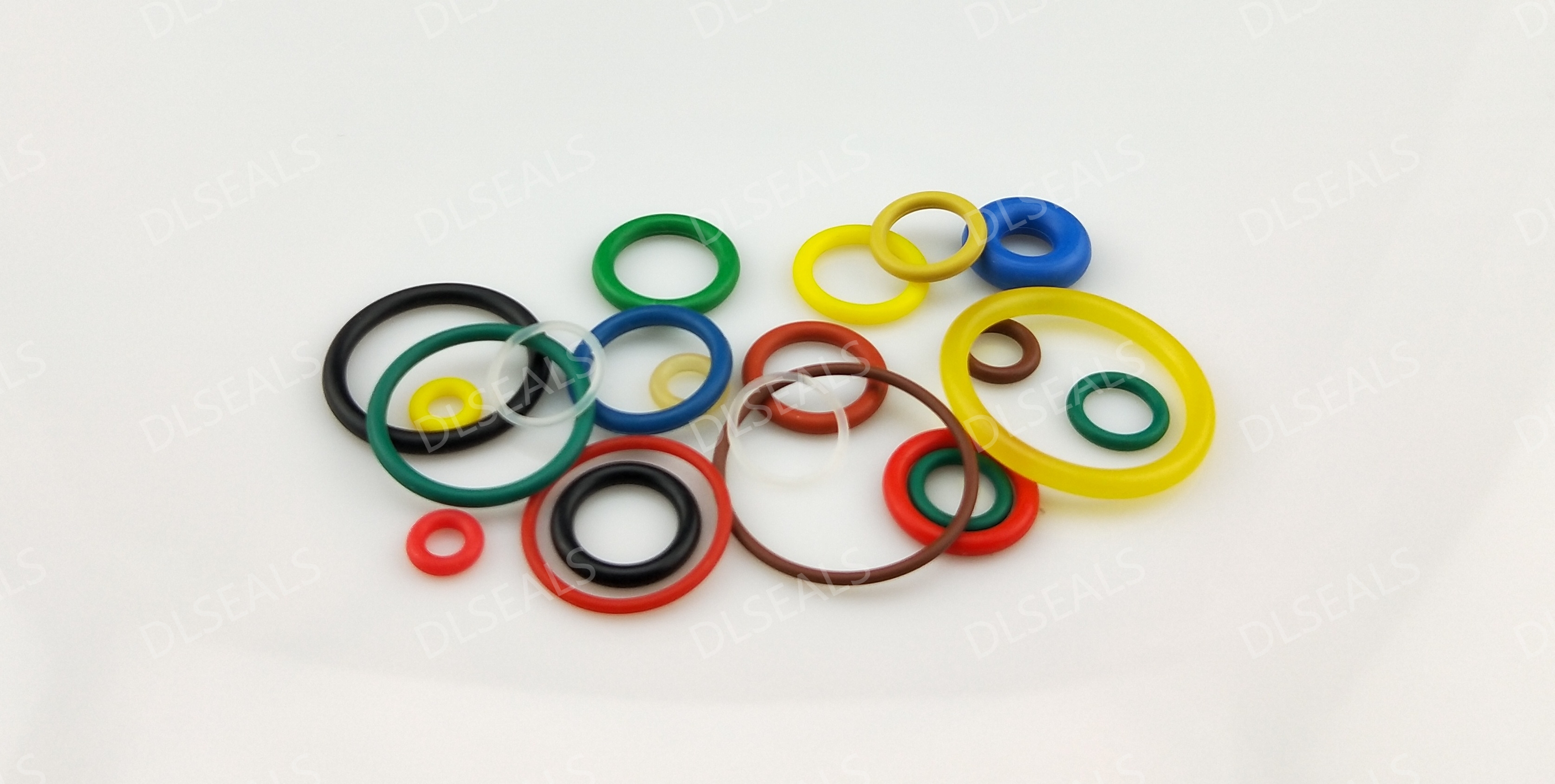
Rubber O-rings are a kind of sealing element widely used in various industrial equipment. They are ring-shaped and can effectively prevent the leakage of liquids and gases. Choosing the right rubber material is crucial to ensure the performance and durability of the O-ring. This article will introduce several common rubber O-ring materials and their characteristics in detail.
1. Nitrile rubber O-ring (NBR)
Features:
Oil resistance: Nitrile rubber has excellent resistance to petroleum-based lubricants and fuels, and is often used in automobile engines, hydraulic systems, etc.
Wear resistance: It has high wear resistance.
Heat resistance: It can withstand temperatures up to 120°C.
Application:
Automotive industry: engines, transmissions, oil seals, etc.
Hydraulic equipment: hydraulic cylinders, pumps, etc.
2. Fluororubber O-ring (FKM)
Features:
High temperature resistance: It can withstand temperatures up to 200°C or even higher.
Corrosion resistance: It has good resistance to most chemicals.
Oil resistance: It has good resistance to various oils and organic solvents.
Application:
Automotive industry: high temperature engine parts.
Chemical industry: reactors, valves, etc.
Aerospace: high-demand sealing occasions.
3. Silicone rubber O-ring (VMQ)
Features:
Low temperature resistance: elasticity can be maintained at -60°C.
Physiological inertness: suitable for food, medical equipment and other fields.
Breathability: suitable for occasions where gas permeation is required, such as vacuum equipment.
Application:
Food processing: food machinery, beverage machinery.
Medical equipment: medical pumps, instrument seals.
Electronic industry: electrical insulation, sealing rings.
4. EPDM O-ring (EPDM)
Features:
Weather resistance: excellent resistance to ozone and UV rays.
Chemical resistance: good resistance to most polar solvents and high-temperature water.
Low density: relatively light, suitable for lightweight design.
Application:
Construction industry: door and window seals, pipe seals.
Automotive industry: bumpers, hoses, etc.
Water conservancy projects: water pumps, valves, etc.
5. Hydrogenated Nitrile Rubber O-Ring (HNBR)
Features:
High heat resistance: Able to withstand temperatures up to 150°C.
Chemical resistance: Excellent resistance to acids, alkalis, oils and chemicals.
High strength: High mechanical strength, suitable for high-pressure applications.
Applications:
Petrochemical: High-pressure seals, chemical reaction equipment.
Mining: Mining machinery seals.
Mechanical equipment: High-pressure pumps, compressors, etc.
Conclusion
The material selection of rubber O-rings directly affects its performance and life in specific applications. Understanding the characteristics of different rubber materials is essential for selecting suitable O-rings. Each material has its own unique advantages and applicable environment. The correct selection can improve the performance of the equipment while extending the service life of the seal. With the continuous advancement of technology, the application of new materials and modification technologies will provide more possibilities for rubber O-rings to meet the complex sealing needs of future industries.
Post time: Oct-25-2024
